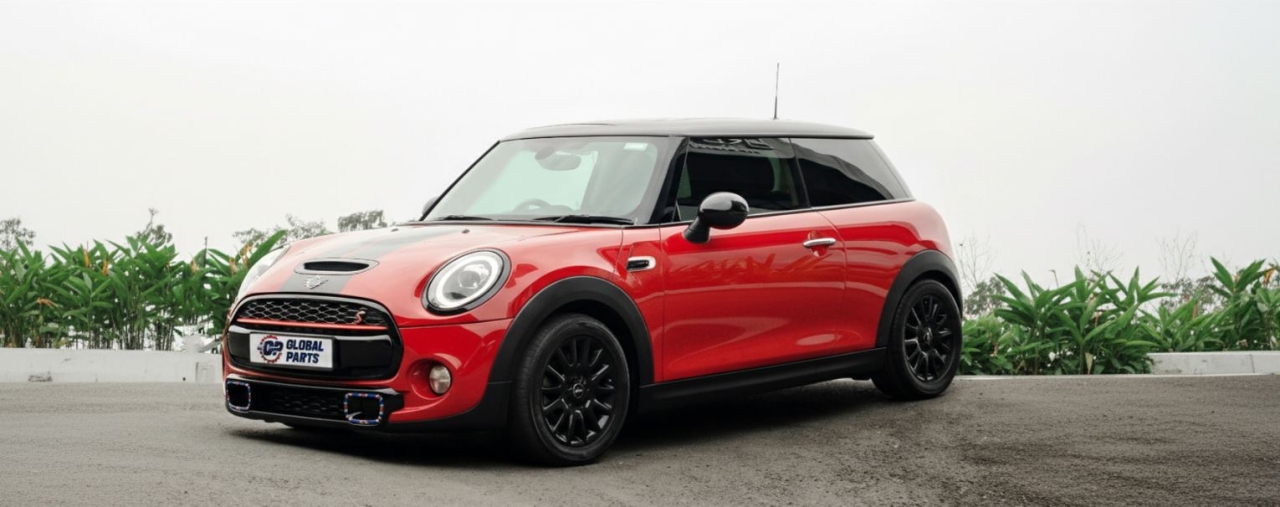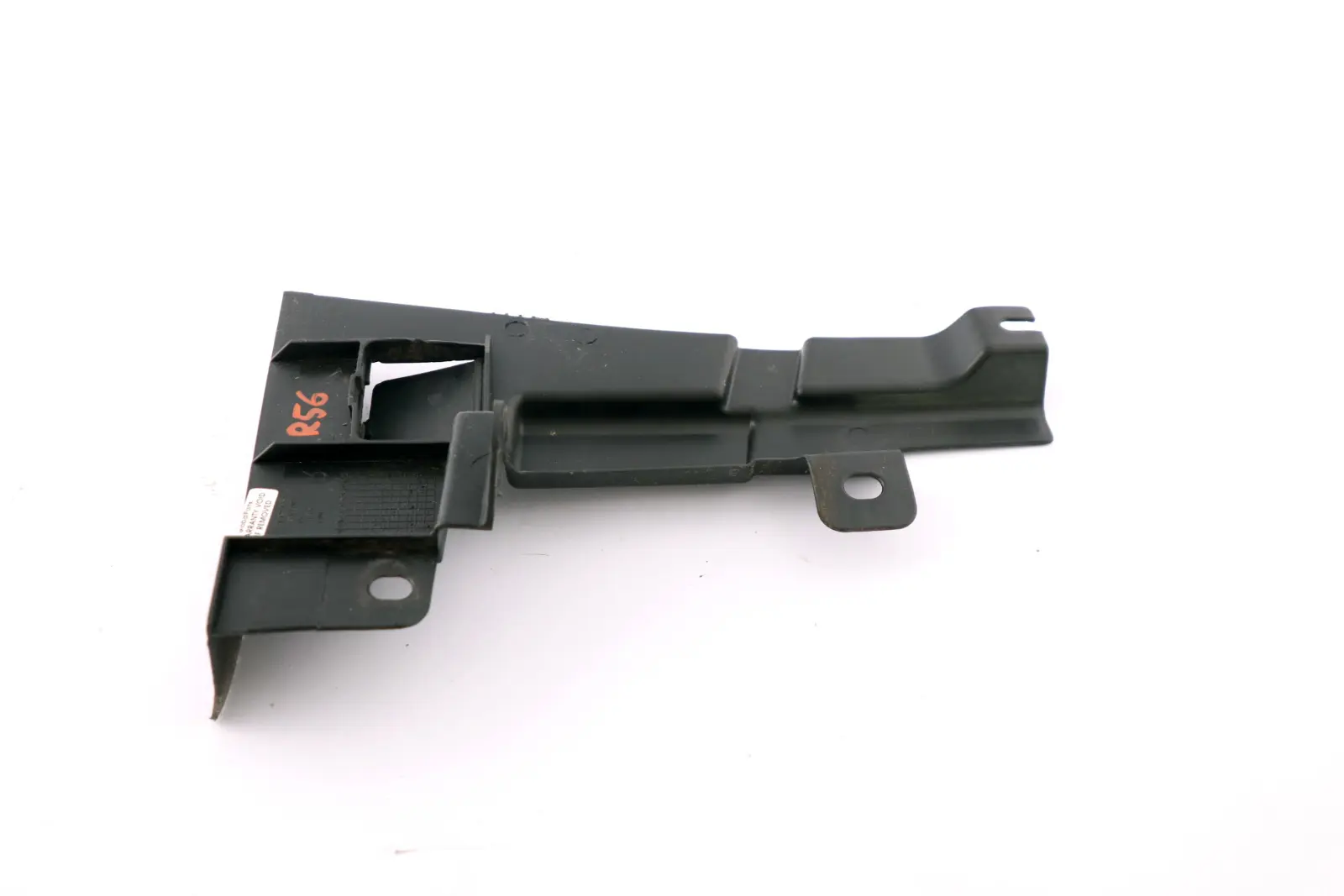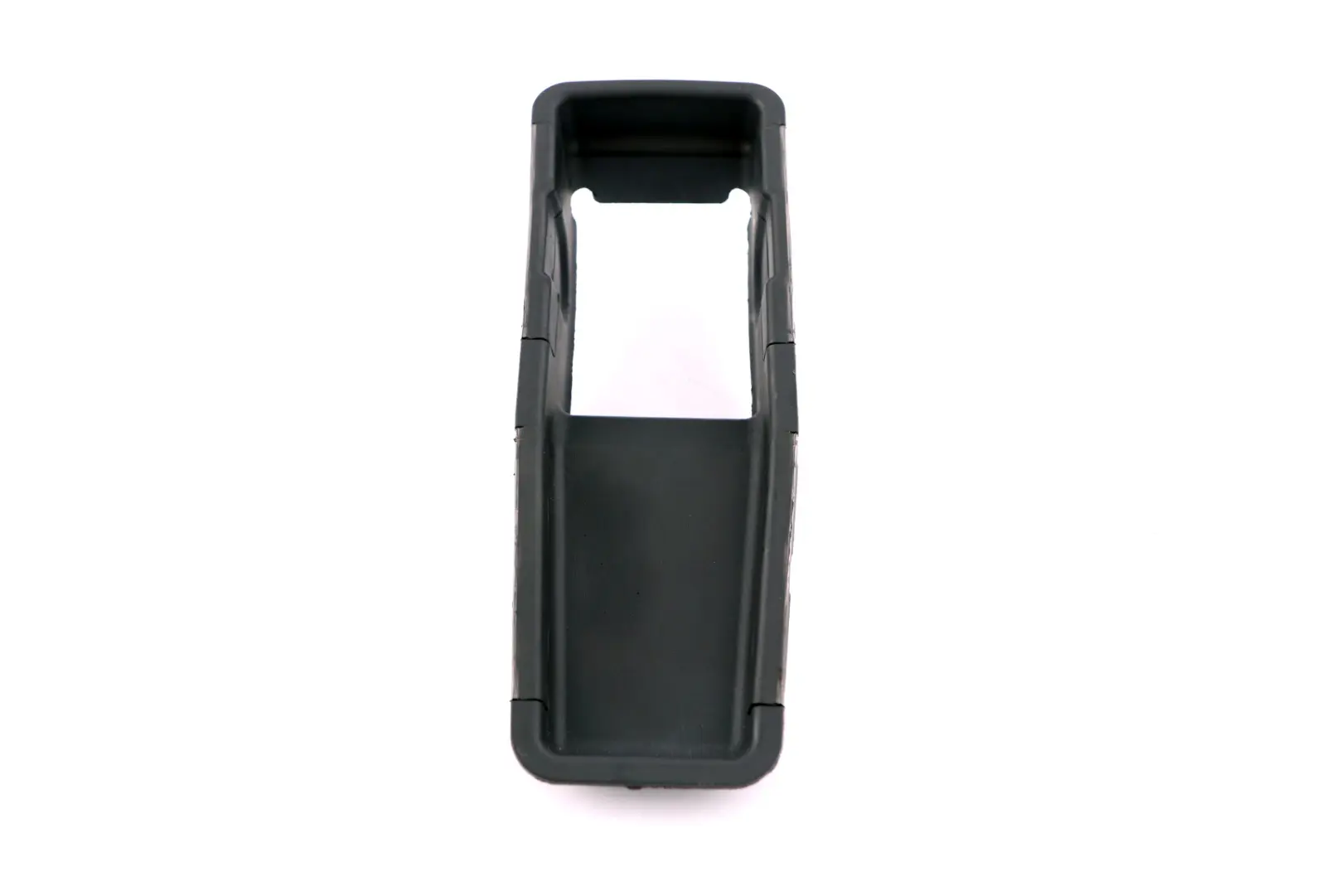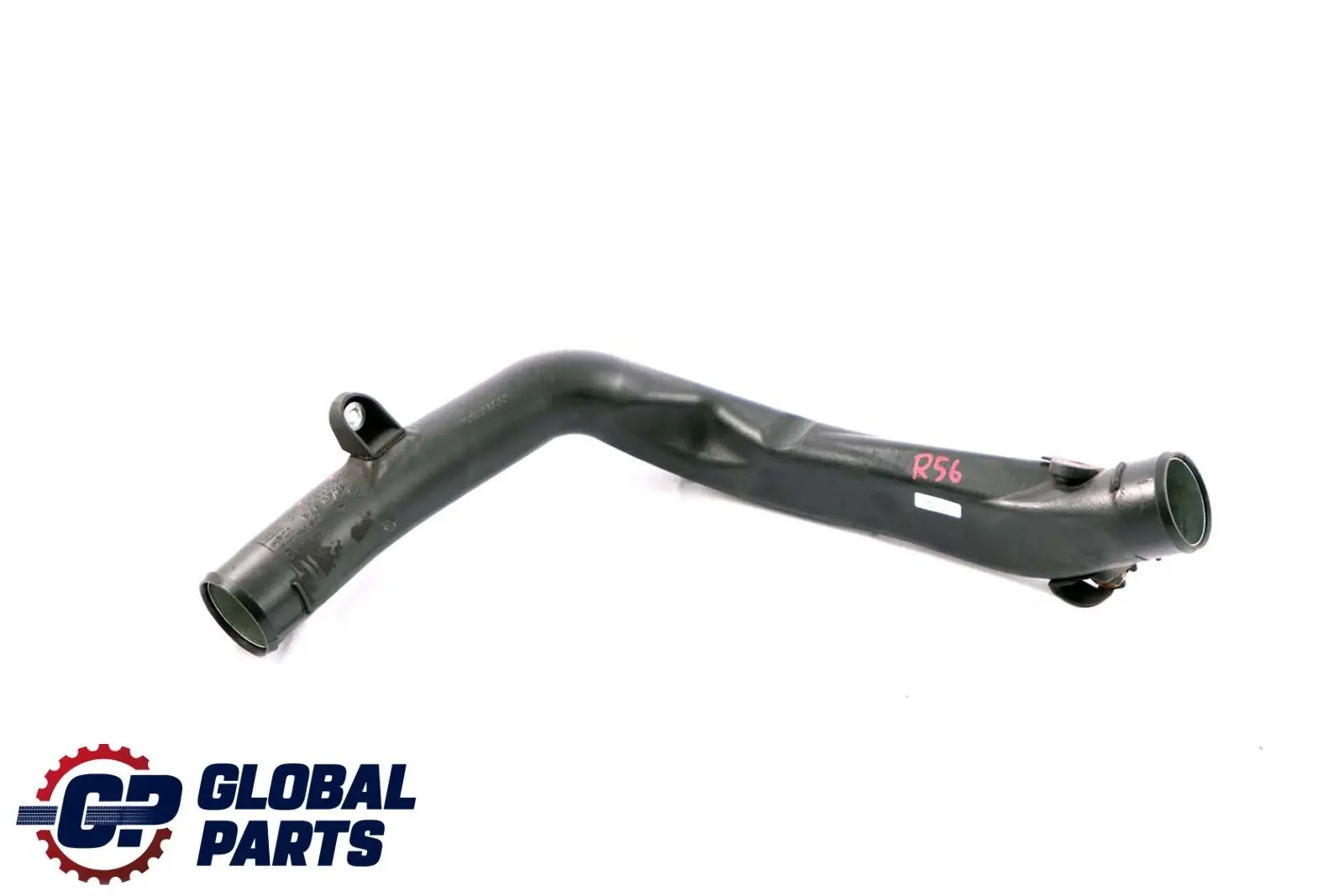Go-Kart Feeling XXL: used N18 vs. B48 turbocharger – what to choose for a Mini Cooper S?
Mini is synonymous with the "go-kart feeling" because it combines a short wheelbase, stiff suspension and a lively engine with immediate throttle response. The essence of the Mini Cooper S version is the supercharging, so the choice of turbocharger affects the character, flexibility and refinement of the engine. In real projects, the original used turbocharger (used OEM) has an advantage because it maintains the geometry, ports and pinout consistent with the model year family. VIN/OEM compatibility shortens installation time, reduces the number of corrections and allows you to get back on the road faster. The text explains the differences between the N18 and B48 turbocharger in the Mini Cooper S, the selection procedures, and compatibility with the Mini Cooper S intercooler. and typical accompanying mods. Tables and FAQs await at the end, and the Global Parts automotive store will help confirm fitment and availability without unnecessary "out-of-the-box" promises.
Mini Cooper S turbocharger – the context of the "go-kart feeling" and when the turbo changes character
The first decision is whether the "go-kart feeling" should be sharper at the bottom or smoother in the mid-range for everyday driving. The Mini Cooper S turbocharger, combined with short gear ratios, creates a flexible midrange, but a different impeller and housing geometry change the feeling of "thrust" and torque buildup. In the N18 (R56 LCI) systems, the turbo works with indirect fuel injection and wastegate control, while the B48 (F55/F56) uses direct injection and more modern boost control. In practice, it's not just peak power, but also repeatability and a stable IAT, so the Mini Cooper intercooler and intake airflow are as important as the compressor itself. The go-kart feeling increases when the system is tight, the blades are clean, and the software knows "what to blow" in a given range. Conclusion: first the architecture and tightness, then the turbocharger selection, and finally the maps and appearance details, such as the Mini Cooper S grille or Mini Cooper S rims. .
N18 turbocharger – context, parameters and who is it for (Diagnostics/Context)
The N18 is a 1.6-liter turbocharged petrol engine from the R56 LCI family, in which the turbocharger supports a "springy" midrange and quick pickup in the city. In practice, the N18 provides a very natural boost input and good cooperation with the manual transmission, which is appreciated by drivers who like short "shots" out of corners. In terms of servicing, cleanliness of the exhaust pipe and tightness of the clamps are important, because the smallest leak will take the edge off and increase the IAT. Typical upgrades include improved charge air cooling, tidying up the intake manifold, and keeping fresh oil and spark plugs – these are the foundations of consistent power. A used N18 turbocharger fits directly according to the VIN/OEM if it comes from the same family, and the entire benefit comes from the "plug-in" without any custom adapters. Conclusion: N18 it's a "go-kart in the city", fast midrange and predictable bottom end if the intake system and intercooler are healthy.
N18 Turbocharger – What to Check When Buying a Used OEM (Selection)
The key to opening the engine is the nameplate and rotor index, which are used to verify compliance with the VIN and year of manufacture. In practice, we look for radial/axial clearance, the condition of the blades, and the absence of cracks in the housing and wastegate seat to avoid pressure fluctuations. It's a good idea to install new O-rings and clamps, as these components most often "damage" the seal and reduce boost. For "daily + weekend" projects, the N18 with an OEM intake and a fresh intercooler will maintain a consistent midrange without map fluctuations at low temperatures. As a result, the "go-kart feeling" returns without having to replace half the components.
B48 turbocharger – context, parameters and who is it for (Strategies)
The B48 is a 2.0 turbo petrol engine (F55/F56) with a more refined driving style and higher thermal potential than the 1.6 N18. In everyday driving, the B48 offers better repeatability, and on longer bends and highway trips, it maintains stable IAT and boost pressure. From a servicing perspective, a clean intercooler, reasonable oil temperature, and no intake resistance are key, as these are what distinguish "full" power from "paper" values. A used B48 turbo within the same year family and control is the shortest route to installation without making adapters. In numbers, the real gain is in the mid-range, and the smooth buildup of torque can be felt from ~1800 rpm without a feeling of "emptiness" before the vanes enter. Conclusion: the B48 is a "go-kart for the track" - thermal stability and a consistent mid-range, if the rest of the system works as intended.
B48 Turbocharger – What to Add to Cart (Installation)
A trouble-free replacement requires a complete set of small parts: O-rings, clamps, new disposable screws, vacuum lines, and fresh oil with filter. After installation, perform pressure and temperature logs, a short auto-adaptation, and a leak check at a constant speed under light load. To be on the safe side, it's worth scheduling an intercooler flush and hose inspection – the oil film is normal, but puddles are not. If the project calls for a more powerful program, it's better to start with the mechanics and cooling, and only then increase the boost targets. This approach maintains the map consistency and allows you to enjoy the "go-kart feel" without limp-home mode.
Mini Turbocharger – Choosing a Used OEM in Practice (Selection/Criteria)
The starting point is always the VIN/OEM, followed by checking the hardware version and year to ensure the plug-in is truly flawless. Used Mini Cooper S turbo It should be from the same control family to avoid unexpected valve/bleeder behavior. In projects where budget and time are important, using OEM parts reduces labor hours and the number of risky adapters. It's worth having a list of accompanying accessories: new O-rings, clamps, hoses, and, if necessary, check the air filter and intake airflow. For owners of the Mini Cooper S Electric Blue version, the note only applies to the year and family – the color does not change the accessories, but body elements (Mini Cooper S grill, Mini Cooper S rims) require a compatible ET and mounting hardware. Conclusion: quick, predictable installation usually wins over a "paper" power gain without mechanical protection.
Mini Turbocharger - What about R53 and the "compressor" (Myths/Mistakes)
In the R53 family (older Mini Cooper S) there is a mechanical compressor instead of a turbo, so upgrades and servicing are different. The newer N18/B48 is a turbocharger, and therefore has a different control logic and intercooler selection - the "compressor" will not translate 1:1 to the R56/F56 When shopping, it's worth clearly defining the Mini generation and sticking to keywords: N18 turbocharger, B48 turbo, Mini Cooper S turbo. Confusing the nomenclature often results in a hunt for incompatible cables and adapters. Practical lesson: platform and family first, then parts.
Mini Cooper S turbocharger – installation and operation (Installation/Operation)
The shortest recipe is: mechanics, leaks, logs, and only then maps – the order determines durability. After installation, the turbo should be filled with oil, revved without ignition, then run and tested under load at a constant speed. Changing maps too quickly without being sure of the IAT and pressures can result in paper power and real overheating. In everyday use, it's important to cool down after a "harsh" section and regularly check the hoses and clamps. For the full effect, you can pair the kit with rims and tires with a reasonable ET – Mini Cooper S rims help you achieve the "go-kart feeling" without rubbing against the wheel arch. Conclusion: mechanics and cooling are the "floor," the software is the "wallpaper" – the reverse order spoils the driving pleasure.
Mini turbocharger – cooperation with intercooler (Operation/Practice)
The Mini Cooper S intercooler lowers intake temperature, stabilizing power and shortening the time it takes to return to the nominal IAT. In practice, it's not just volume that matters, but also flow resistance – too long a core or tight elbows can increase turbo lag. After replacing the turbo, it's worth planning an intercooler flush, as a thin oil film is normal, and a puddle of oil indicates a problem. For city "S" cars, cleaning is recommended every season, especially if the car is driven in very dusty conditions. The visible effect is more linear acceleration and less performance fluctuation in hot weather.

TABLE – Mini Cooper S: N18 vs B48 turbocharger comparison (abbreviation)
| Criterion | N18 turbocharger | B48 turbocharger |
|---|---|---|
| Generation | R56 LCI (1.6 T) | F55/F56 (2.0T) |
| The nature of the top-up | Quick entry, springy center | Equal midpoint, stable IAT |
| Injection | Indirect | Direct |
| "Go-kart feeling" | Urban "burst" and short sprint | Stability on the road and long curves |
| Installing a used OEM | Usually a "plug-in" by VIN/OEM | "Plug-in" by VIN/OEM + IAT logs |
| Service priorities | Tightness of the clamps, cleanliness of the intake | Intercooler, oil, adaptations |
TABLE – Mini Cooper S: Selection and assembly checklist (abbreviation)
| Stage | What to do | Why are you doing this? |
|---|---|---|
| Selection | VIN/OEM, control family | Plug-in reliability and no adapters required |
| General cargo | O-rings/bands/disposable screws | Elimination of micro-leaks |
| Cooling | Intercooler and intake flushing | Stable IAT and repeatable boost |
| Start | Oil flooding + first start | Turbine bearing protection |
| Logs | Pressure + IAT + corrections | Verification of maps and tightness |
| Exploitation | Cooling down after a "sharp" episode | Longer turbo life |
FAQ – Mini Cooper S, go-kart feeling and used turbo (Q&A)
| Question | Short answer |
|---|---|
| What is the difference between the N18 and B48 turbocharger in the Mini Cooper S? | The N18 (1.6 T, R56 LCI) gives a quick bottom end and a supple midrange; the B48 (2.0 T, F55/F56) offers a smoother midrange and a more stable IAT. |
| Is a used Mini Cooper S turbocharger a good idea? | Yes, if it is a used OEM matched by VIN/OEM; installation is usually "plug-in" and less modifications are required. |
| What else, besides the turbo, affects the "go-kart feeling"? | Intake tightness, functional intercooler, correct rim ET and map matching after installation. |
| How to check the intercooler after replacing the turbo? | Flushing, leak test and oil check: a thin film is normal, a puddle indicates a problem. |
| Does the R53 "compressor" fit the R56/F56? | No. The R53 has a mechanical compressor and the R56/F56 has a turbocharger; they have different systems and controls. |
| Does changing the turbo require tuning? | After the plug-in, logs and a short adaptation are recommended; a more powerful program only after IAT/pressure verification. |
| What to watch out for when buying a used turbo? | Index and plate, rotor clearance, blade/housing condition, compatibility with control family and year. |




